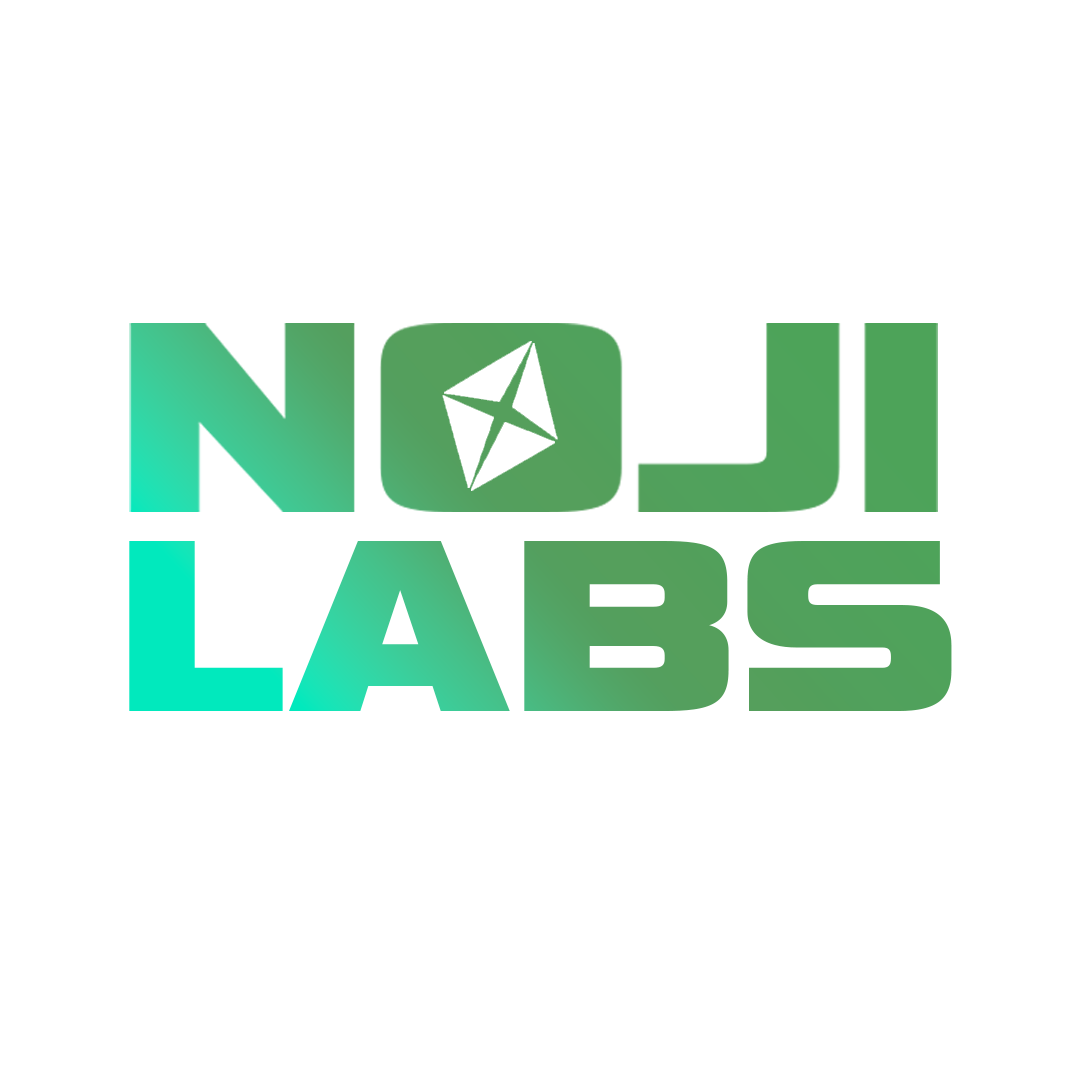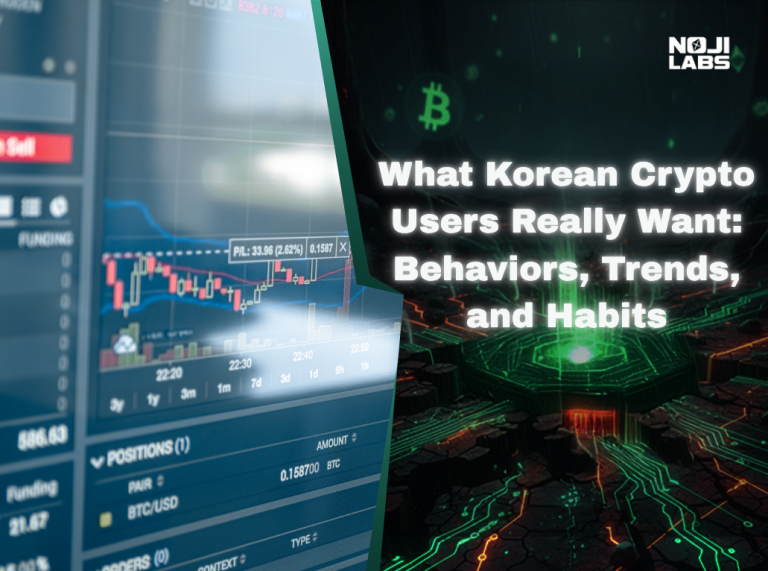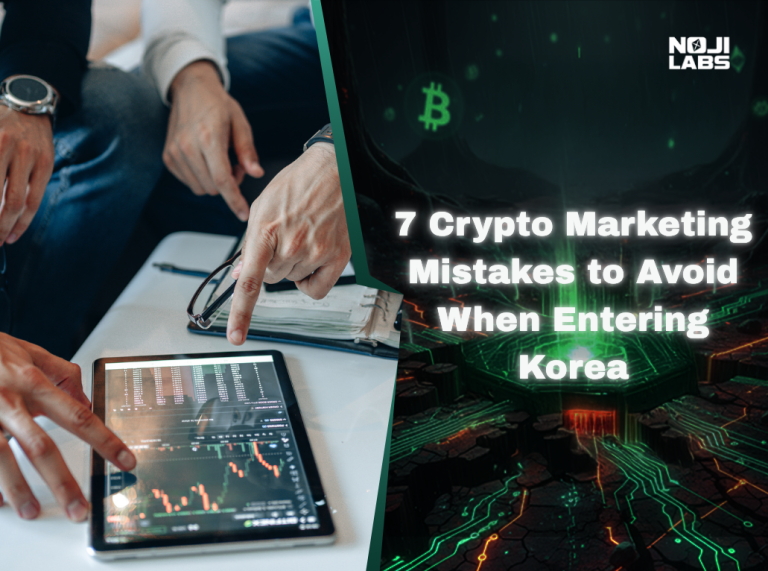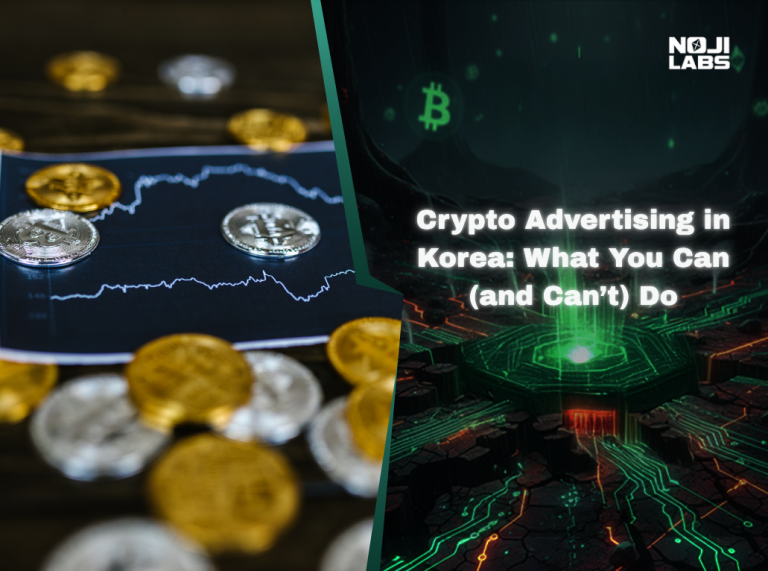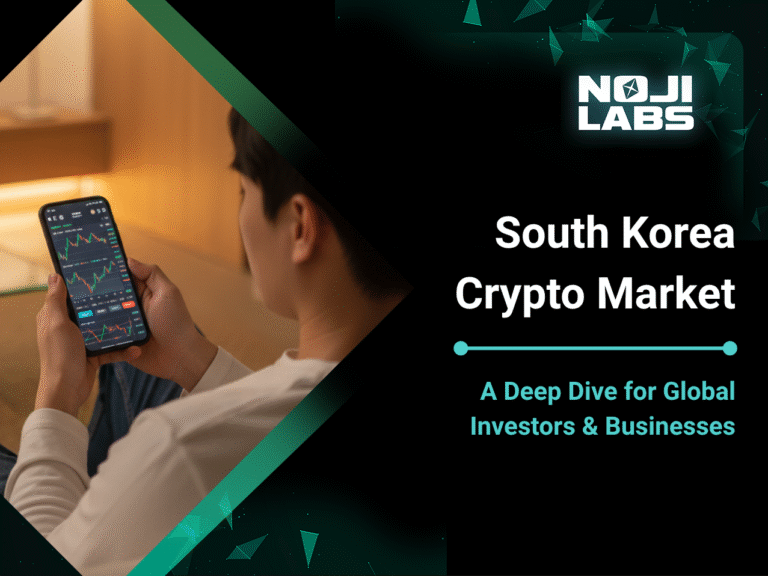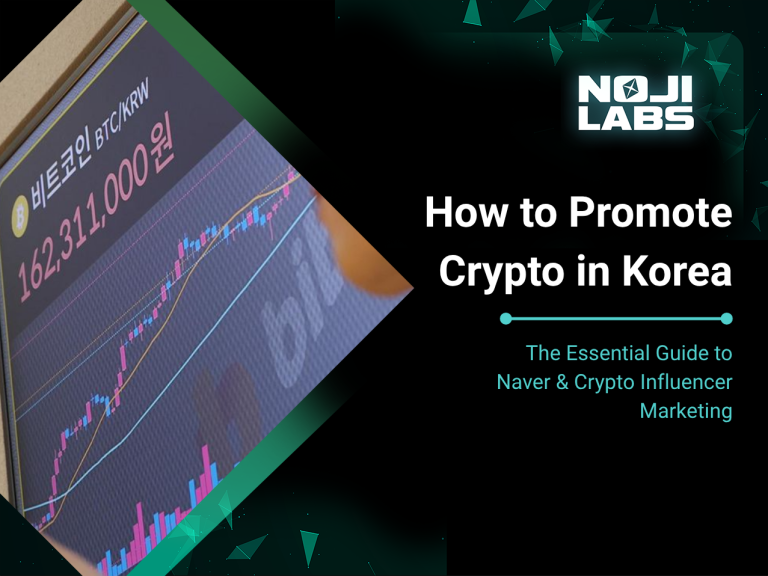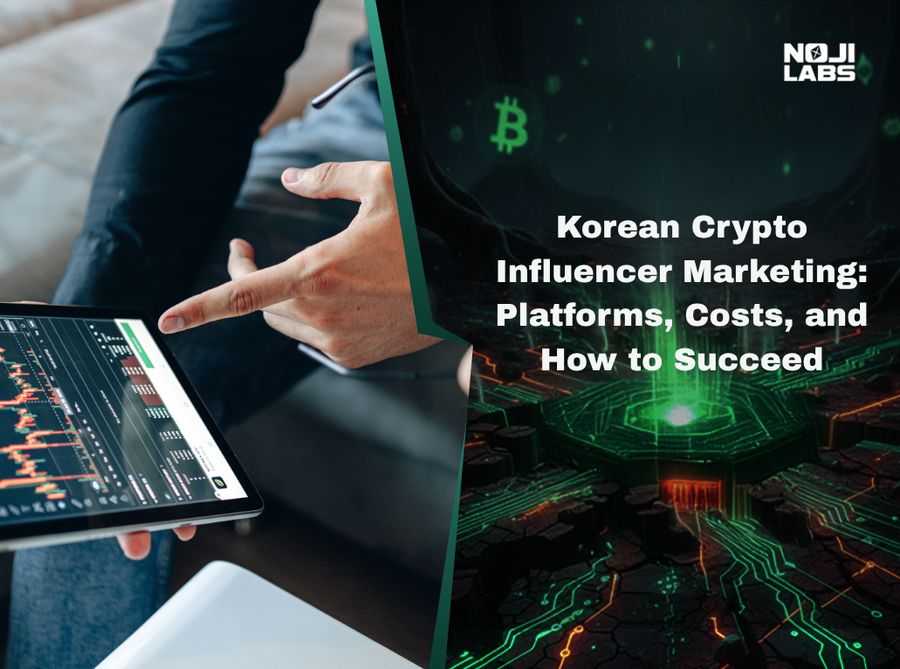
So, you’re curious about Korean crypto influencers? Of course you are. Everyone from token startups to DeFi giants wants a piece of the Korean market, and guess what, good luck getting traction without them. Korea isn’t just another “emerging” market; it’s the place where retail traders basically turned crypto into a national sport. But here’s the kicker: Korean audiences don’t fall for the same cookie-cutter influencer shtick that works elsewhere. They can smell a fake endorsement faster than you can say “airdrop.” If you want to break through, you’ll need to understand their platforms, their culture, and their costs, or risk burning your marketing budget faster than a meme coin rug pull.
Why Korean Crypto Influencers Matter
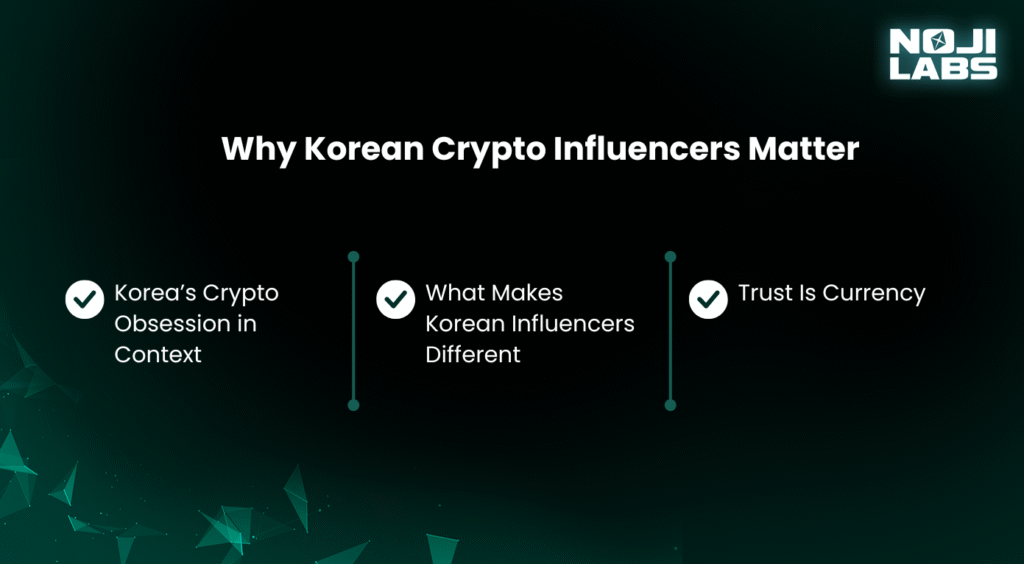
You can have the best whitepaper, the slickest tokenomics, and even a half-decent roadmap (which is asking a lot these days), but in Korea? None of it matters if people aren’t talking about you. And who makes people speak? Korean crypto influencers.
Korea’s Crypto Obsession in Context
South Korea isn’t just “into crypto”—it’s borderline obsessed. We’re talking about one of the highest crypto adoption rates in the world, with trading volumes that regularly outpace those of the stock market. For everyday Koreans, crypto isn’t some fringe investment; it’s a mainstream asset class. That means every new project, every coin, and every blockchain trend is scrutinized and hyped on social media before it ever reaches the exchanges.
What Makes Korean Influencers Different
Here’s the deal: Korean audiences don’t blindly follow influencers like some Western markets do. They demand consistency, credibility, and a voice that feels authentic. A slick promo without substance? Dead on arrival. Meanwhile, a trusted KOL who’s been grinding for years can move markets with a single video or tweet. That’s why these influencers are more than just “content creators.” They’re gatekeepers.
Trust Is Currency
If there’s one thing to understand about Korea’s digital culture, it’s that trust is earned, not bought. Followers stick to influencers who consistently deliver value, whether that’s in-depth analysis, timely market signals, or brutally honest takes. Brands that try to cut corners with shady promos usually end up on the community’s blacklist faster than you can say “scam.”
And that’s why Korean crypto influencers matter: they’re not just megaphones; they’re cultural translators, credibility builders, and the shortcut to gaining real traction in one of the most competitive crypto markets on earth.
The Influencer Landscape in Korea
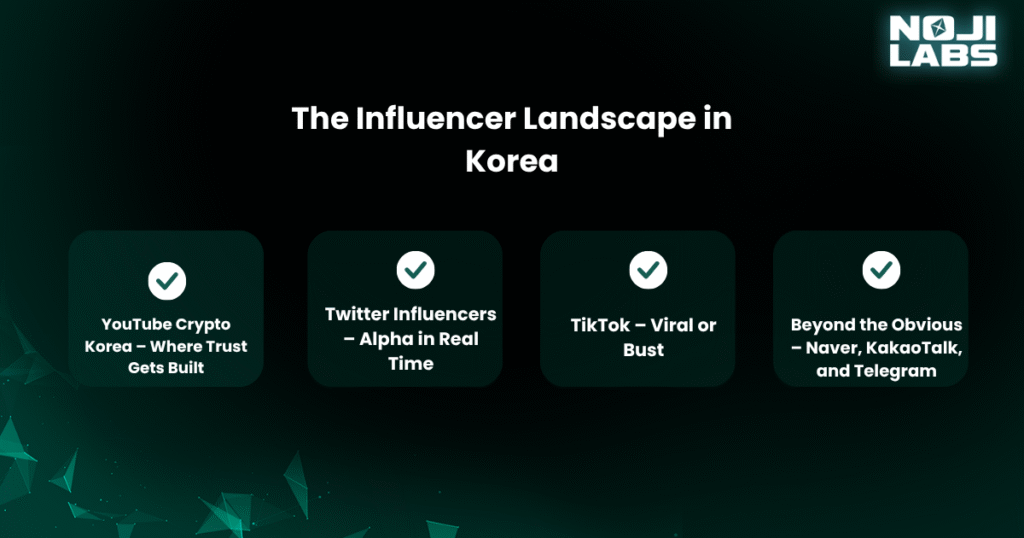
If you’re thinking influencer marketing in Korea is just “hire someone with followers and pray,” think again. The Korean market runs on its own rules, and if you don’t know the platforms, you’ll get eaten alive. This is where KOL marketing Korea becomes less of a buzzword and more of a survival strategy, because each channel has its own culture, audience, and ROI game. Let’s break it down.
YouTube Crypto Korea – Where Trust Gets Built
YouTube is the heavyweight champ of Korean crypto content. Think long-form analysis, project breakdowns, token deep-dives, and even tutorials for newbies. Audiences here aren’t looking for hype; they want education wrapped in a personal touch. The most successful YouTube crypto Korea channels don’t just “promote”; they dissect. If your project gets airtime here, it means something. This is where credibility gets minted.
Twitter Influencers – Alpha in Real Time
Crypto Twitter isn’t optional in Korea; it’s where the markets breathe. Twitter influencers push news, memes, charts, and hot takes at breakneck speed. It’s not polished, it’s not pretty, but it’s fast and raw. Korean traders love that immediacy, and they’ll amplify influencers who can spot trends before they hit exchanges. Nail this platform, and you’ve got direct access to the heartbeat of Korean crypto traders.
TikTok – Viral or Bust
Don’t laugh, TikTok is no longer just dance routines and filters. In Korea, it’s where younger investors and casual traders hang out. Short, snappy crypto explainers and meme-driven skits can rack up insane reach. The danger? Oversimplify too much and you’ll look like a clown. But if you can ride the algorithm wave, TikTok can deliver exposure no paid ad could buy.
Beyond the Obvious – Naver, KakaoTalk, and Telegram
While Western marketers obsess over YouTube and Twitter, Korea’s underground engines are still Naver blogs, KakaoTalk groups, and private Telegram communities. These aren’t just side channels; they’re where whales and hardcore retail discuss what’s real versus what’s hype. If your campaign ignores these ecosystems, congrats, you’ve just missed half the market.
The takeaway? KOL marketing in Korea isn’t about throwing cash at one influencer. It’s about navigating a multi-platform ecosystem where credibility, speed, and community overlap. Get the mix right, and you’ll own the conversation. Get it wrong, and you’ll just be another project nobody remembers.
KOL Marketing in Korea – How It Works
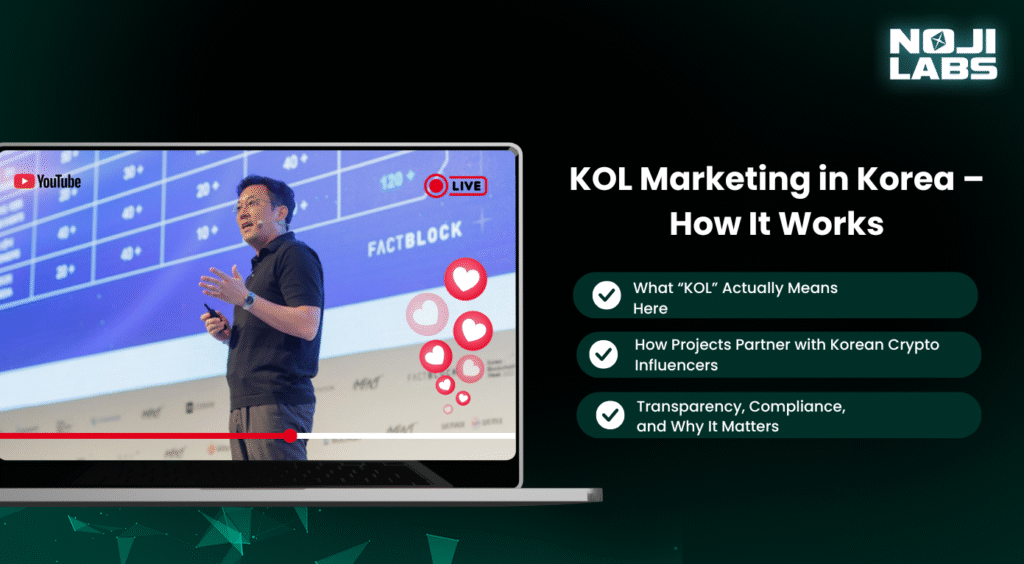
So you’ve heard the phrase “KOL marketing in Korea” tossed around like it’s some magic bullet. Spoiler: it’s not magic, it’s strategy, execution, and a whole lot of cultural nuance. Let’s cut through the fluff and talk about how this actually works in the Korean crypto scene.
What “KOL” Actually Means Here
In Korea, a Key Opinion Leader (KOL) isn’t just a guy with followers. They’re community anchors, trusted figures who have built credibility through consistent content, market insights, and brutal honesty. When they speak, their audience listens because it feels more like advice from a friend than a sales pitch. That difference is everything.
How Projects Partner with Korean Crypto Influencers
Partnerships aren’t one-size-fits-all. Depending on your goals, you might:
- Do sponsored reviews – Long-form YouTube deep-dives where influencers dissect your project (and yes, Koreans watch the whole thing).
- Host AMAs – Twitter Spaces or KakaoTalk Q&A sessions where the audience grills you directly. Welcome to the hot seat.
- Run airdrop campaigns – Amplify reach while rewarding community engagement. Works like wildfire if executed right, looks desperate if not.
- Collaborate on educational content – Influencers explaining your product in local terms that make sense for Korean users.
These aren’t “ads” in the traditional sense. They’re relationship-driven collabs, and that makes all the difference in how the audience perceives your project.
Transparency, Compliance, and Why It Matters
Here’s where a lot of foreign projects screw up: Korea has zero tolerance for shady influencer campaigns. If your KOL is clearly shilling without disclosure, expect backlash. If your project gets linked to pump-and-dump tactics, good luck recovering. Compliance and transparency aren’t optional here; they’re survival tactics. Korean communities reward honesty, and they’ll blacklist projects that try to cut corners.
The bottom line? KOL marketing in Korea is effective when it feels authentic, transparent, and culturally relevant. Skip those steps, and you’re just noise in a market already flooded with hype. Do it right, and you’ve got a direct line into one of the most engaged crypto audiences on the planet.
The Costs of Working with Korean Crypto Influencers
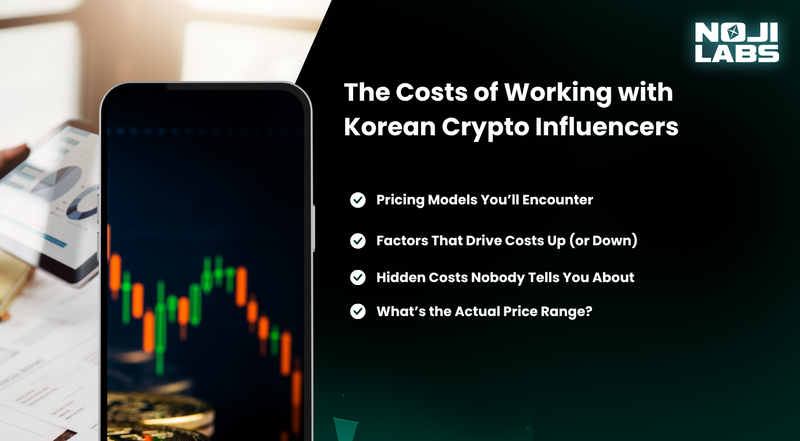
Let’s talk numbers, because at the end of the day, crypto projects want ROI, not “exposure.” And working with Korean crypto influencers? It’s not cheap, but it can be worth every satoshi if you play it right. The catch: pricing here isn’t standardized; it’s a wild mix of fees, favors, and factors most outsiders don’t even consider.
Pricing Models You’ll Encounter
Influencer pricing in Korea usually falls into one of three buckets:
- Flat fees – Pay a set amount, and receive a video, post, or shout-out. Simple, but risky if the campaign flops.
- Performance-based – The influencer is rewarded based on clicks, sign-ups, or conversions. Less common, but gold if you can negotiate it.
- Long-term ambassadorships – Ongoing partnerships where a KOL becomes a face of your project. Expensive, but massively credible if the influencer is respected.
Factors That Drive Costs Up (or Down)
Not all campaigns are created equal. Your budget will depend on things like:
- Follower count & engagement rate – A Korean YouTuber with 100k die-hard subs can charge more than a Twitter account with 500k ghost followers.
- Platform – YouTube crypto Korea collabs cost the most (long-form, high trust), while Twitter influencers might be cheaper but faster-moving. TikTok sits in the middle, offering viral potential and a lower cost of entry, but not as much long-term trust.
- Project type – A hyped GameFi launch might get cheaper access than a DeFi protocol nobody understands. Influencers price based on what they think their audience will actually care about.
Hidden Costs Nobody Tells You About
Here’s where most projects blow their budget:
- Translation and localization – No, Google Translate won’t cut it. You need cultural nuance or your campaign will crash.
- Content repurposing – Want to turn that YouTube review into short clips for TikTok? Extra cost.
- Campaign management overhead – Someone has to coordinate with influencers, track deliverables, and deal with inevitable “sorry, I’ll post it tomorrow” delays. That someone isn’t free.
What’s the Actual Price Range?
Here’s the brutally honest answer: it varies. Some micro-KOLs might charge a few hundred dollars for a tweet or Kakao post. Top-tier YouTube crypto Korea channels can demand $5,000–$20,000+ per dedicated review. And that’s before you factor in localization and management. Sticker shock? Sure. However, remember that these influencers don’t just sell impressions; they sell credibility.
Strategies to Succeed in Korean Influencer Marketing
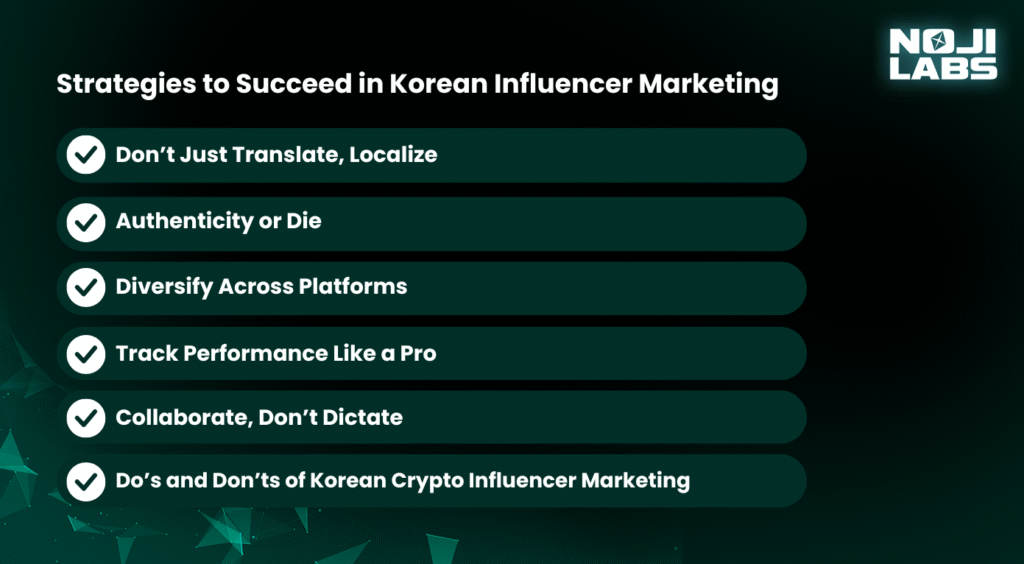
Now that you know who the players are and what they cost, you’re ready to proceed. But here’s the harsh truth: just throwing money at Korean crypto influencers doesn’t guarantee jack. Half the projects trying to “go viral” in Korea end up as background noise, or worse, a cautionary tale. If you want to actually succeed, you need to treat this market like the beast it is.
Don’t Just Translate, Localize
This is the rookie mistake we see over and over: projects think slapping their whitepaper into Google Translate makes them “ready for Korea.” Nope. Korean traders live in a world of slang, memes, and cultural nuance. If your content reads like a corporate manual, you’re dead on arrival. Localize your messaging, tone, jokes, and visuals so that they feel tailored for them, not imported from abroad.
Authenticity or Die
Koreans are sharp. They can sniff out a paid shill faster than a whale spots an exit liquidity opportunity. The influencers who thrive here are the ones who maintain credibility by mixing education, entertainment, and (yes) skepticism.
If your campaign looks like a cash grab, their audience will roast you, and your project will get blacklisted in Telegram groups before you can even spell “HODL.” Collaborate with influencers to create authentic, story-driven content, not bland promotional materials.
Diversify Across Platforms
Here’s the play: don’t bet everything on a single platform. YouTube in Korea is great for credibility and depth; Twitter influencers provide speed and virality, while TikTok unlocks younger demographics. KakaoTalk and Telegram are where conversions actually occur. Think of it like building a DeFi portfolio; you spread your investments across channels to hedge risk and maximize ROI.
Track Performance Like a Pro
If you’re only measuring impressions, congrats—you’re wasting money. In Korea, what matters is:
- Engagement (likes, shares, comments, discussion in community chats)
- Referral traffic (how many users actually click through)
- Conversions (signups, downloads, token purchases)
- Brand mentions (Is your project being talked about organically after the campaign?)
Without tracking these KPIs, you’re basically blindfolding yourself and throwing money into the void.
Collaborate, Don’t Dictate
Pro tip: Korean KOLs know their audience better than you do. Don’t hand them a stiff script written by your intern in English. Instead, give them the key points and let them craft the message in their own voice. That freedom is what makes the endorsement believable, and that is what sells.
Do’s and Don’ts of Korean Crypto Influencer Marketing
| Do | Don’t |
| Localize content with Korean slang, humor, and cultural nuance. | Dump a poorly translated whitepaper and call it “localization.” |
| Work with influencers to create authentic, story-driven content. | Force KOLs to read a stiff corporate script. |
| Diversify across YouTube, Twitter, TikTok, and KakaoTalk/Telegram. | Put your entire budget into one channel and hope for the best. |
| Measure KPIs: engagement, conversions, and organic mentions. | Brag about impressions like they mean anything. |
| Build long-term relationships with credible KOLs. | One-off “shill posts” with random influencers nobody respects. |
Common Mistakes Foreign Projects Make
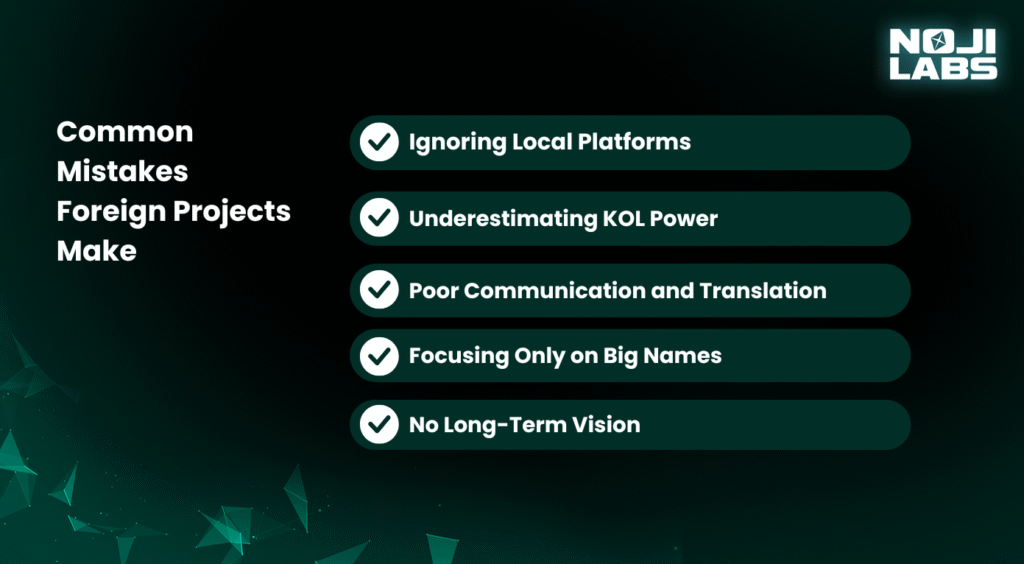
Diving into Korea’s influencer scene without understanding the cultural and market nuances is like trying to trade Bitcoin with your grandma’s AOL dial-up. Spoiler: it won’t end well. Many foreign crypto projects fail not because their idea is bad, but because they enter the Korean market without understanding how things actually work here. Let’s break down the rookie mistakes we see again and again.
Ignoring Local Platforms
Foreign teams often focus only on global platforms like Twitter and YouTube, forgetting that Koreans live and breathe on Naver, Kakao, and local forums. If you’re not where the community actually hangs out, you’re invisible.
Underestimating KOL Power
KOL marketing in Korea isn’t a “nice to have”; it’s the heartbeat of community trust. Too many projects assume a few global shoutouts will move the needle, but without local credibility, you’re just another outsider yelling into the void.
Poor Communication and Translation
Google Translate won’t save you here. Messy Korean copy screams “foreigner” and instantly kills credibility. Fluent, culturally relevant messaging is non-negotiable.
Focusing Only on Big Names
Foreign projects love chasing the most prominent names (and paying the fattest invoices). The smarter play? Mix top-tier influencers with micro KOLs who have highly engaged, niche communities. Skipping this balance means wasted budget and lukewarm results.
No Long-Term Vision
Too many projects treat influencer marketing as a quick pump. Koreans see right through it. If you’re not building trust and community for the long game, you’ll be forgotten faster than last week’s meme coin.
Why Work with Noji Labs
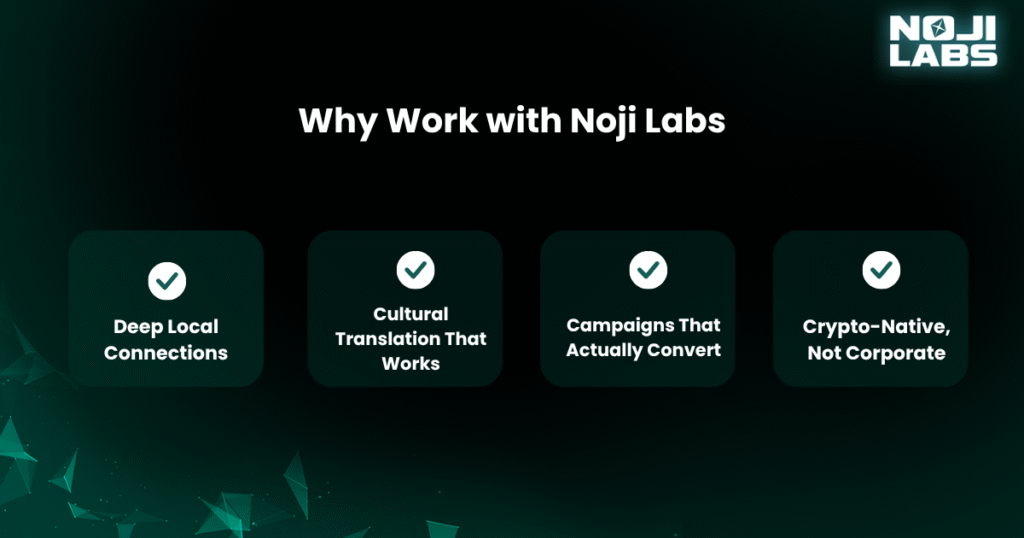
Let’s be real: you could try to brute-force your way into Korea’s crypto scene solo, but chances are you’ll burn money, waste time, and end up as another “foreign project flop” meme on Korean forums. Noji Labs exists to make sure that doesn’t happen. We’re not a generic crypto marketing agency dabbling in crypto as a side hustle. We’re crypto-native, plugged into the culture, and already running with the very influencers you’re desperate to get on your side.
Deep Local Connections
We know who moves the needle in Korea, not just the obvious top names, but also the micro-influencers who control niche tribes. No guessing, no cold emails, no overpriced middlemen. We bring you straight to the source.
Cultural Translation That Works
We don’t just translate words; we translate intent. We craft messaging that resonates with Korean audiences using the right slang, tone, and energy. No awkward phrasing, no “obvious foreigner” vibes, just clean, credible comms.
Campaigns That Actually Convert
Forget vanity metrics. We design campaigns around growth, engagement, and ROI. It can be driving Telegram signups, hyping a token launch, or building a long-term Korean community. Hype is easy. Results are harder. We deliver both.
Crypto-Native, Not Corporate
Unlike big “all-service” agencies, we don’t juggle banks, fashion brands, and shampoo ads on the side. Noji Labs ONLY works with blockchain, DeFi, GameFi, and Web3 projects. That means we speak your language, understand your goals, and are aware of the pitfalls that can hinder traction in this market.
Winning Korean Crypto Markets Through Influencers

Korea isn’t just “another region” on your expansion map. It’s the arena where projects either moon or get deleted from the chart. Korean crypto influencers are the gatekeepers, the amplifiers, and the trust layer that determines whether retail buyers invest or ignore you. Projects that win here don’t just get Korean holders; they unlock liquidity, floor price stability, DAU spikes, and community clout that echoes across Asia.
And this is precisely where Noji Labs (노지랩스) plays. We’re not an “agency.” We’re the operator class, crypto-native, frontier-built, and already wired into Korea’s influencer ecosystems across YouTube, Twitter, TikTok, and Telegram. Every campaign is engineered for ROI: wallets connected, liquidity deepened, floors defended, holders retained. No fluff, no vanity likes, just raw metrics that matter.
We’re built on wild ground, forged in markets where retail moves faster than exchanges can list new products. That’s why the strongest projects run with us. Proof? Look at who’s still standing after the last cycle. The ones that moved with intent, speed, and the right allies.
Here’s the offer: we open doors that foreign projects can’t. But scarcity is absolute; we don’t take on everyone. We don’t do “clients.” We pick partners. If you’re serious about Korea, this is the alpha you can’t afford to fade.
The next 100x won’t wait.
FAQs
Because Korea isn’t casual about crypto, it’s a cultural phenomenon. Influencers here aren’t just shilling; they’re market movers. One tweet or video from the right KOL can spark liquidity inflows, push new holders, and ignite Telegram chatter overnight.
YouTube reigns supreme for in-depth reviews and project breakdowns, Twitter influencers dominate the fast-paced alpha drops, and TikTok is emerging as a platform for quick retail hype. Telegram and KakaoTalk also play a significant role in community retention.
It depends on reach, platform, and engagement. Big-name YouTubers can run five figures per campaign, while niche Twitter KOLs or micro TikTok influencers can be more affordable. However, remember that cheap doesn’t always mean effective. Korea’s market operates on trust, and audiences are attentive to authenticity.

